20th Anniversary Issue: China
Super growth, Superpower
October 1st 2013
The Asia-Pacific is now, officially, the power driving the commercial aviation world. China, in turn, is the great big wheel driving the Asia-Pacific. It takes one word to sum up its growth in the last two decades: remarkable.Read More »
The emergence of China’s aviation industry was the cover story in the first issue of Orient Aviation in October, 1993. We called it China’s Great Leap Forward.
Great Leap Forward? It was more of a gentle hop compared with the monumental growth that was to follow in the next 20 years. And even that progress will pale into insignificance in the years to come as China’s fast-multiplying middle class clamours for travel opportunities at home and abroad.
Only capacity and skills shortages risk tempering a travel stampede in China, but more of that later.
If there are those who still wish to be convinced of China’s advance, here are a few believe-it-or-not statistics.
In 1993, China’s 35 carriers had just over 200 western built aircraft (it was fast phasing out its old and inefficient Russian and Chinese jets), which compared with about 50 western jets a decade earlier. The industry had been deregulated in 1988, when the all-encompassing CAAC carrier was split into six regional airlines.
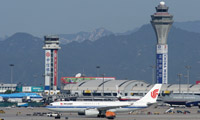 |
| China has doubled the number of its airports to around 200 in the last 20 years |
Today, China has more than 2,000 aircraft of over 100 seats with 46 airlines, many of which boast some of the youngest fleets in the world. China Southern Airlines, the Mainland’s largest carrier by passengers carried, and its subsidiaries, have 500 aircraft and are taking delivery of another 80 this year.
Aircraft manufacturer, Boeing is expecting demand for new aircraft of over 100 seats to treble by 2032.
Boeing has forecast a demand for 5,580 planes during the period of which 77% will be for growth, with the remaining 23% replacing old aircraft.
China’s airlines carried around 30 million travellers in 1993. Compare that with the 319.36 million passengers who travelled on the Mainland’s carriers last year. Of those more than 296 million flew domestically, 23 million internationally.
Twenty years ago, China had just over 100 airports. Today, it has 183. The Civil Aviation Administration of China (CAAC) plans another 80 airports in its five-year plan to 2015.
But China’s success has not been without its problems. Indeed, it has been a victim of its own success. In the Nineties it had serious safety problems as the number of new airlines grew out of control.
In 1996, the deputy director of the CAAC planning office, Wang Zhi, admitted China had allowed air traffic to expand too quickly in 1990s.
He said only 18 billion yuan ($2.16 billion) had been spent on airport development between 1990 and 1995 compared with 100 billion yuan on the purchase or lease of 283 aircraft. The CAAC revealed plans to build and upgrade 41 airports in the following five years.
In addition to capacity constraints there were serious skills shortages, which still exist today and will continue well into the future. China is not alone. Pilot shortages, for example, are proving a global phenomena.
Back in 1994, despite a growing cockpit crew shortage even then in China, an airline source told Orient Aviation some pilots faced losing their jobs. “We have too many unqualified pilots. There has been a habit in China where some pilots, many of them unqualified, have got jobs because a friend has recommended them by word-of-mouth to someone they know in the airline.”
Such was the ‘wild west’ mentality in the country in those years. As growth continued at a break-neck speed, China’s safety record was among the worst in the world in the mid to late Nineties.
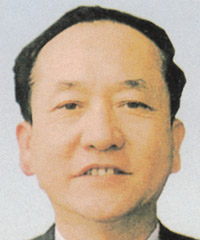 |
| CAAC director general, Chen Guangyi: got tough with airlines in the mid-Nineties |
As calls continued to slow expansion, the CAAC, led by director general, Chen Guangyi, got tough. It curtailed the number of airlines and restricted the issuing of operating licences. With the help of companies like Boeing and Airbus, China’s carriers invested heavily in training – both manufacturers have major training centres in the country - introduced more modern aircraft into their fleets and upgraded equipment.
As a result, since the turn of the century, China has had one of the best safety records anywhere in the world.
John Leahy, Airbus chief operating officer customers, gave an insight into China’s airline industry in those early days during an interview with Orient Aviation in 2011.
Shortly after he was appointed commercial director in 1994, he made his first trip to the Mainland. “At the time, the number of Airbus planes in China was in single digits,” he said. “Boeing had over 200 aircraft in service.
“When I arrived in Beijing I found that our office was a hotel room. Our guy was seconded there, spending half his time in Toulouse and half in Beijing. We were nowhere.”
Leahy changed all that, creating a huge infrastructure. Airbus China Company Ltd was established and its Beijing representative office was opened in 1994.
Today, Airbus has 960 planes in China after introducing its first A310 to China Eastern Airlines in 1985. Boeing, which first sold planes to China following President Nixon’s historic trip in 1972, has around 1,000 aircraft on the Mainland.
Both of the manufacturers have huge investments in China. More than 7,000 Boeing aircraft are flying with parts and assemblies done in China. Boeing partners directly with more than 35 major Chinese companies and with hundreds of Mainland subcontractors.
More than half of Airbus’ global fleet includes parts made in China. The value of Airbus and the Chinese aviation industry’s cooperation reached $295 million in 2012 and is expected to be near $500 million in 2015.
In 2008, Airbus established its A320 final assembly line in Tianjin, in cooperation with the Tianjin Free Trade Zone and China Aviation Industry Corporation (AVIC). More than 140 A320s from the facility have been delivered.
Regional jet manufacturers, Bombardier and Embraer, also have joint ventures in China for the assembly of their aircraft.
OVER THE YEARS:
1993
Not surprisingly the world was wooing the Chinese aviation industry, not least the International Air Transport Association (IATA).
China’s ‘Big Three’, Air China, China Southern Airlines (CSA) and China Eastern Airlines (CEA), joined IATA that year and today all China’s major carriers are IATA members.
1996
Foreign carriers were shipping 95% of goods exported from China. Aviation consultant, the late Jim Eckes, wrote in Orient Aviation that Asia was the world’s greatest growth market for air cargo and China was driving that growth. However, said Eckes, China had the smallest fleet of freighters in the North Pacific.
“Many countries are eating out of the Chinese air cargo rice bowl,” he wrote. Meanwhile, Hong Kong International Airport was capitalizing on China’s freight boom.
1997
The CAAC was starting to whittle down the number of airlines by ordering smaller airlines to merge.
1998
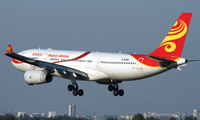 |
| Hainan Airlines: hired two Australian pilots in 1998, but the CAAC insisted they leave after a month |
At least two airlines, CSA and CEA, were rumoured to have approached the CAAC about hiring Russian pilots to make up for the shortage of Chinese pilots. The request was expected to fall on deaf ears.
A couple of years earlier Hainan Airlines had employed two Australian pilots, but they were sent home a month later on the insistence of the CAAC. It was generally felt that the decision was made because the difference in salaries between western and Chinese pilots could create major problems.
It was reported at the time that the training of pilots, maintenance personnel and cabin crews was improving significantly aided by overseas expertise and investment.
Also in 1998, losses were mounting for China’s carriers and jobs were being lost. It was forecast that CSA and CEA could retrench up to 10% of their staff. “We are looking at a very difficult decade ahead. There has been too much investment too fast,” said one analyst.
1999
The CAAC said it would carry out a safety audit on all airlines before the end of the year. CAAC director, Liu Jianfeng, urged airline executives to spend less time on travelling and entertaining and more time on monitoring and improving safety procedures.
There was speculation that the CAAC was going to announce major mergers as part of sweeping reforms in the loss-making airline industry.
| The direct flights jackpot Direct flights across the Taiwan Strait between China and Taiwan had been discussed for decades. No carriers had flown between the two points since the Communists took power on the Mainland in 1949. As far back as 1995, executives of Taiwan’s international and regional airlines told Orient Aviation they expected the green light for cross-strait flights to come from the governments within two years. So convinced were they that it would happen that carriers on both sides had been meeting each other and signing Letters of Intent for the big day. It was said there were more than one million Taiwanese tourists and business people wanting to visit China, but their carriers could only fly as far as Hong Kong where passengers had to change planes to continue to the Mainland. It was January, 2003, when the first momentous breakthrough happened. Six of Taiwan’s carriers were given permission by its government to collectively operate 16 charter flights to China, via Hong Kong or Macau, in the lead up to the Chinese New Year holiday. China Airlines (CAL) completed Taiwan’s first commercial flight to Shanghai in five decades. The ban was re-imposed after the holiday break. In the following years, little by little the rules were relaxed. Carriers from both sides were allowed to make the flights, but had to pass through Hong Kong or Macau airspace. This caveat was dropped and flights were reduced from as long as five hours to 90 minutes. More charter flights were added to the route and more carriers included in the lucrative new business. In 2008, cargo flights came ‘to the party’. In 2011, the then president (now chairman) of CAL, Huang-Hsiang Sun, cast light on the success of direct flights across the Taiwan Strait. He said in 2010 passenger revenue alone from cross strait flights accounted for 13.6% of CAL’s total revenue. “I believe there would be 2½ times more [direct] traffic between Taiwan and China, certainly more than double, if all travel restrictions were lifted. The potential is huge,” he told Orient Aviation. This year, four Skyteam members, Taipei’s CAL and the Mainland’s China Eastern, China Southern and Xiamen Airlines, joined forces to boost market share across the Taiwan Strait. Called the Greater China Connection, the alliance services will account for half of the capacity of the high-yield routes, with 270 flights a week. Another 280 round trip cross-strait flights will operate through Hong Kong. There will also be almost 25,000 China domestic flights a week by the alliance members on the route. |
2000
Talk of major liberalisation in China was continuing.
2001
At last, it happened. The CAAC announced that nine of the airlines under its wing would merge into three groups led by Air China, CEA and CSA. As Orient Aviation reported at the time: “The mergers are key to Beijing’s goal of forging a strong and internationally competitive airline sector … which has long been dogged by over-capacity, reckless price wars, heavy indebtedness and poor records of safety and service”.
2002
Hainan Airlines and Shandong Airlines invested in corporate jets. They were also discussing investing in other carriers.
CSA provided special services for thousands of parents from the west seeking to adopt children born in China.
The restructuring of China’s airline industry was officially announced in Beijing’s Great Hall of the People. The president of Air China, Wang Kaiyuan, said he believed it would take three years to complete the transition.
2003
Taipei’s China Airlines overcame great political hurdles in Taiwan when it gained government approval to purchase 25% of Shanghai-based China Cargo Airlines, a subsidiary of CEA. The $47 million deal was the first airline investment by a Taiwanese company in the Mainland.
2004
The CAAC announced all foreign carriers could have free access to the Mainland’s second-tier cities if they first stopped off at Hainan Island. IATA director general, Giovanni Bisignani, said this was a “political approach” to demonstrate that China was serious about going ahead with liberalization.
The Chinese government was also looking at an Open Skies cargo market for Shanghai, he said. Bisignani added that he could see an Open Skies passenger market at cities like Beijing and Shanghai within 10 years.
China’s major airlines were said to be playing catch-up in their cargo market as they looked to expand their freighter fleets. In 2003, $60 billion worth of goods were shipped out of China by air, $16 billion more than in 2001.
2005
Spring Airlines, China’s first private and low-cost carrier, was launched.
2006
The cargo frenzy in the country continued as volumes soared. Chinese carriers expanded their freighter fleets and overseas airlines competed for greater shares of the market.
2007
The growth of China’s aviation industry was twice the world average, but the size and quality of the sector was unable to meet the demands of reforms and the economic development of the country, said aviation minister, Yang Yuanyuan. A lack of initiatives had meant the industry had remained uncompetitive, he added.
Minister Yang’s goals for the future included the development and improvement of airports, the upgrading of security at airports and a new air traffic control system that would increase capacity, safety and efficiency.
Traffic in 2006 was 30.6 billion tonne kilometres. Cargo volume was 3.49 million tonnes. The forecast for 2020 was 140 billion tonne kilometres and 16 million tonnes respectively.
Later in the year, Yang pointed to shortfalls in qualified personnel in China, airport and airways congestion and excessive fleet growth, which all posed excessive safety risks. He said the industry was growing “too fast” a repeat of similar warnings 10 years earlier.
2008
As the Beijing Olympics approached, new CAAC boss, Li Jiaxiang, addressed senior staff on the fears of central government. Once again, it was unrestrained growth in China’s airline industry with congestion, flight delays and cancellations becoming commonplace. Li, a former Air China chairman, said Mainland airlines needed to improve management, attract more talent and upgrade infrastructure.
The CAAC was trying to restrain growth with measures that included imposing penalties on carriers with repeated flight delays and bans on new aircraft imports if the operator did not have enough pilots.
2009
Airbus delivered its first China-assembled A320 from its Tianjin final assemble line, to Dragon Aviation Leasing.
2010
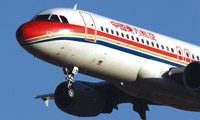 |
| China Eastern Airlines: its merger with Shanghai Airlines had added 25% to its bottom line in 2010 |
High speed trains were changing the transport landscape. Any route of less then 1000 kms would impact the airlines, said CEA information officer, Kevin Cai. He felt that if you can’t beat them join them, with railway companies and airlines selling each other’s tickets.
A CSA spokesman said passenger drift to the railways could ultimately hit 25% of its domestic network.
2011
China will require an additional 70,600 pilots through to 2029, according to a Boeing report. That is 3,500 a year. However, Chinese authorities said they would require 18,000 more pilots by 2015. The chairman of LCC, Spring Airlines, said the carrier had cut back its expansion plans because it could not find enough pilots.
CAAC director general, Li Jiaxiang, said China would spend 1.5 trillion yuan ($227.1 billion) on increasing the number of airports from 175 to 220 and would expand its fleet of aircraft from 2,600 to 4,500. This was highlighted by the projection that by 2015 the number of airline passengers would almost double from 267 million to 500 million.
Li said 130 of China’s airports had made a combined loss of 1.7 billion yuan in 2010.
CEA said its merger with Shanghai Airlines had contributed 25% to its bottom line in 2010.
LCC Spring Airlines, announced its 2009 profit had increased eight-fold to 158 million yuan (US$23.1 million). But no pain no gain. In 2009, it slashed senior management salaries by 30%.
Air China took control of southern China’s Shenzhen Airlines.
2012
Shenzhen-based Jade Cargo, a joint venture between Shenzhen Airlines and Lufthansa, grounded its fleet of six B747-400s because of “weak demand”. Sources said they doubted the carrier would resume business.
Sleeping with the enemy. CEA, the first airline in China to sell high-speed rail tickets, upgraded services between its hub in Shanghai with the Shanghai Railway Bureau. CEA increased connections to several cities while rail frequencies were enhanced from 22 a day to 92.
Meanwhile, CEA and Hainan Airlines partnered with the Shanghai Railway Bureau and the Yuhei Railway respectively in deals that allowed passengers to transfer between domestic rail travel and international air travel on one ticket.
CSA launched its Canton Route between Australasia and Europe with Guangzhou as its hub. It was a declaration of war against the major international carriers who had dominated traffic flows along the traditional Kangaroo Route to Europe through Singapore and, in more recent times, Middle East operators through the Gulf.
Spring Airlines said it was looking to establish a base in Japan.
2013
Spring Airlines expanded in Hong Kong as it prepared to launch a low-cost subsidiary in the city.
The Mainland’s home-grown regional aircraft, the ARJ21, has been delayed until 2014. Later in the year, it was announced the first flight of its midsize commuter jet, the C919, was delayed to the end of 2015.
Air China confirmed it had ordered 60 A320 series aircraft at a published price of $5.37 billion. Shenzhen Airlines, an Air China subsidiary, agreed to spend $3.48 billion on 40 Airbus aircraft.
Air rage has flared in China. Some flight attendants were taking kung fu classes.
Game Changers
KONG DONG
Before his retirement in 2012 as chairman of the Mainland’s national carrier, Air China, Kong Dong was one of the most influential people in the industry. Politically well connected and with a vast wealth of experience behind him, he was one of the China aviation industry’s true heavyweights.
But when Kong Dong appeared in Orient Aviation’s first edition in October, 1993, he was just starting to climb the executive ladder. He was the manager at Shenzhen Airport, just across the border from Hong Kong, which had opened two years earlier.
“I never imagined such high traffic figures when work on Shenzhen Airport was started. That’s why I am working so hard,” said Kong, a mechanical engineering graduate.
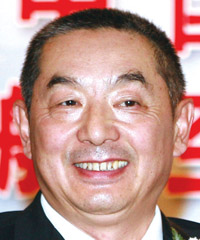 |
In its first full year it had a throughput of 1.7 million passengers, 25% higher than expected. It was forecasting 2.6 million for 1993.
Compare that to today’s figures. Shenzhen, now the country’s fourth largest airport with two runways and a third under discussion, had 2.6 million passengers in February alone this year. For the first seven months of 2013, its throughput was 18.44 million passengers and more than 506,300 tons of cargo.
In 1993, Kong said there was an average 80 movements a day at Shenzhen, today there are almost 700 daily or, as in February, 19,500 movements a month.
As he has been throughout his career, Kong was keen to match such areas as service and security to international standards and to introduce outside expertise to help the airport expand.
It was a sign of things to come for the chess-loving Kong. After Shenzhen, winning moves included heading the China Ocean Helicopter Company. In 2002, after China’s state-owned carriers were consolidated into three, he became deputy general manager of Air China’s parent, China National Aviation Holding Company. Kong became chairman in 2008.
When he took over as chairman of Air China, Kong turned heads by doing things differently from aviation industry practice - answering letters of complaint, learning risk-management and preaching best practices.
He also recognised the importance of the airline’s partner, Cathay Pacific Airways. “Cathay Pacific is a model for Air China to learn from,” he said. The company set a goal of developing Air China into one of the global top 10 air businesses by 2015, said Kong.
CHEN FENG
In less grand times, when Chen Feng was president of a solitary carrier, Hainan Airlines, he told Orient Aviation how, in 1989, he was invited by the Hainan provincial government to start an airline.
He went to the people to raise the money and offered stock options. “They did not know what stock was,” he said. “I told them, and when they offered me money I said ‘this is not a paper airplane I want to buy, this is a real one’.”
The people of Hainan now have the fourth largest airline in China. Chen heads up its parent, the HNA Group, which today is an empire extending far beyond the shores of China.
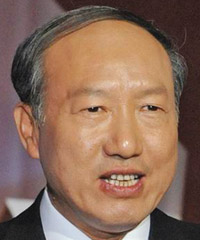 |
Hainan Airlines was launched in 1993. Chen followed this in 1995 with the launch of Beijing-based executive jet operation, Deer Jet. In 1998, Hainan became the first Chinese airline to own shares in an airport when it acquired a 25% stake in Haikou Meilan International Airport.
Chen’s empire was beginning to grow. In 2000, the HNA Group was formed. It is the parent of Hainan Airlines and also controlled Shanxi Airlines, Chang’an Airlines and Xinhua Airlines.
As the years passed, the group continued to diversify. Today, its core services include aviation, logistics, tourism and financial services.
HNA’s web site asserts it has annual revenue of RMB126 billion (US$20.59 billion) and nearly 120,000 employees. Most recently, a cruise ship belonging to HNA Tourism’s arm was seized by authorities in South Korea over a $58 million arbitral award that, allegedly, had not been paid. The media said it highlighted HNA’s “chronic debt”.
The HNA’s aviation division has 17 carriers under its control, including airlines in Ghana and France and a 45% stake in Hong Kong Airlines. It also part-owns Hong Kong Express which is to be re-launched as an LCC this month.
It’s a long way from the days when Chen was knocking on doors trying to raise funds for his first airline.
Capt. YU YAN EN
Capt Yu could be called the “father” of China’s modern airline industry. As chairman of the China Southern Airlines (CSA) Company in the Nineties he was a stand-out leader. As the industry struggled with too many airlines that were over-staffed and had worrying safety records, CSA and its chairman stood head and shoulders above the rest.
The carrier had the most modern western aircraft, carried the most passengers, had the most international routes and the best training for its young pilots. While a growing number of Mainland carriers were sending their cadets to flying schools all over the world, Capt. Yu broke with tradition and established two China Southern training schools in Western Australia.
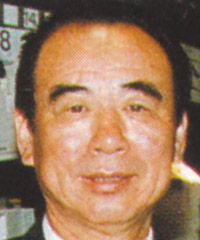 |
He was also the driving force behind the setting up of Guangzhou Aircraft Maintenance and Engineering Company (GAMECO) at Baiyun Airport, in Guangzhou, in the early 1990s.
Capt. Yu was a progressive thinker who was not afraid to ruffle the feathers of the bureaucratic CAAC masters in Beijing - which he did regularly. He admired the international carriers beyond China’s shores, likes Cathay Pacific and Singapore Airlines, and they respected him.
A landmark in his career came in 1997. After three years of preparation CSA listed within two days on the New York and Hong Kong stock exchanges. Speaking from the floor of the New York Stock Exchange, Capt. Yu described it as “one of my proudest moments”.
But above all, Capt Yu was a pilot’s pilot. He flew the line until he was 60 and still head of the airline. He won the CAAC’s First Class Flight Safety Medal for flying safely for over 7,000 hours.
So much has changed now, but Capt Yu spoke prophetically in the dawning of China’s new age of aviation when he said: “We need to change the mindset of many state-run companies. Too many of them expect the state to give them the resources [money] or the market. We need managements with the creativity and vitality to go out and compete in the market.”
Capt Yu always said that when he stepped down from CSA, he would help with the training side of the business. And with the aviator’s blood still coursing through his veins, this is what he did.